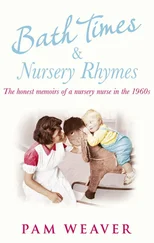Nelson Johnson - Boardwalk Empire - The Birth, High Times, and Corruption of Atlantic City
Здесь есть возможность читать онлайн «Nelson Johnson - Boardwalk Empire - The Birth, High Times, and Corruption of Atlantic City» весь текст электронной книги совершенно бесплатно (целиком полную версию без сокращений). В некоторых случаях можно слушать аудио, скачать через торрент в формате fb2 и присутствует краткое содержание. Жанр: Старинная литература, на английском языке. Описание произведения, (предисловие) а так же отзывы посетителей доступны на портале библиотеки ЛибКат.
- Название:Boardwalk Empire: The Birth, High Times, and Corruption of Atlantic City
- Автор:
- Жанр:
- Год:неизвестен
- ISBN:нет данных
- Рейтинг книги:5 / 5. Голосов: 1
-
Избранное:Добавить в избранное
- Отзывы:
-
Ваша оценка:
- 100
- 1
- 2
- 3
- 4
- 5
Boardwalk Empire: The Birth, High Times, and Corruption of Atlantic City: краткое содержание, описание и аннотация
Предлагаем к чтению аннотацию, описание, краткое содержание или предисловие (зависит от того, что написал сам автор книги «Boardwalk Empire: The Birth, High Times, and Corruption of Atlantic City»). Если вы не нашли необходимую информацию о книге — напишите в комментариях, мы постараемся отыскать её.
Boardwalk Empire: The Birth, High Times, and Corruption of Atlantic City — читать онлайн бесплатно полную книгу (весь текст) целиком
Ниже представлен текст книги, разбитый по страницам. Система сохранения места последней прочитанной страницы, позволяет с удобством читать онлайн бесплатно книгу «Boardwalk Empire: The Birth, High Times, and Corruption of Atlantic City», без необходимости каждый раз заново искать на чём Вы остановились. Поставьте закладку, и сможете в любой момент перейти на страницу, на которой закончили чтение.
Интервал:
Закладка:
After the narrow gauge railroad there was no turning back. Within a few short years Atlantic City was a boomtown. Pitney’s sleepy little beach village had awakened. Each summer found dozens of new hotels and boardinghouses, appearing like mushrooms, popping up from nothing at sites that had been beach sand the year before. Year after year, late winter through spring, Atlantic City was a beehive of activity swarming with construction workers sleeping on cots, living in tents, eating in temporary cafeterias and working seven days per week. Workers signed on for the season, knowing they would work every day until the weather became too nasty. For nearly three decades, from the latter part of the 19th century into the second decade of the 20th century, a “Tent City” rose up from the sand every spring, pitched at a different location, following the growth of the resort. The residents of Tent City were mostly itinerant laborers and tradesmen, sometimes with their families, usually not. These crews of workers were brought to town by Philadelphia contractors and established businesses looking to get in on the action at the shore. They worked at a fever pitch from sunrise to sunset and made the city hum.
The air was filled with the sounds of shovels, hammers, saws, and masonry tools. A walk down any street would bring sounds of men working: from bricklayers shouting at their helpers, “brick, block, mud” as they worked to complete a foundation, to carpenters calling down from a roof for more shingles and nails. Going from one job site to another were women and young children hawking sandwiches and beverages. At the end of each day, make-shift beer gardens were packed with thirsty workers. There was never enough beer, nor women, to go around, and late evening brawls were common. During peak building periods the local police had their hands full. Except for the most serious crimes, arrest and jail weren’t the answer. Local authorities relied upon employers to keep their laborers under control. For them it was back to Tent City, where the offender could sleep it off and return to work the next day.
The resort quickly became a blue-collar town. Thousands of building tradesmen and laborers came to Atlantic City looking for work and many remained to make it their home. For nearly two generations after the second railroad, the resort was a place where strong hands could always find work. While things slowed down with the coming of fall, a laborer’s wages, along with odd jobs in the off-season, were usually enough to see a family through to spring. Between the years 1875 and 1900, the resort’s year-round population increased from less than 2,000 to nearly 30,000. Pitney’s beach village had become a city. By the turn of the 20th century, there were several neighborhoods taking shape. First- and second-generation Irish, Italians, and Jews, most by way of Philadelphia, came to town and brought their citified ways.
The Irish were part of the work gangs that built the original railroads and laid out the city’s streets. They formed construction companies and established taverns and boardinghouses. Italian craftsmen followed the Irish and worked with them in building hotels, boardinghouses, and homes. The Italians started local firms involving all the building trades and opened restaurants, food markets, and bakeries. Jewish merchants arrived at the turn of the century establishing retail businesses and playing a vital role in commercial development. Many were involved in banking, finance, the law, and accounting. Within a single generation after Samuel Richards’ second rail line, Absecon Island was transformed from a quiet beach village that shut down at the end of each summer to a bustling city based solely upon tourism.
Nationally, tourism and the hotel and recreation industry were in their infancy. There were only a handful of vacation spots and they were reserved for the wealthy. Outside of cities, the hotels that existed were generally large guesthouses and no one viewed the working class as potential patrons. But Atlantic City did and tourism became the only game in town. Scores of Philadelphia and New York businessmen saw the opportunity to profit from the hotel and recreation business and came to town in a frenzy. They brought the capital—in amounts Pitney and Richards could have only dreamt of—needed to build a city. In no time there was a fourth railroad providing direct rail service to New York City.
The speed in constructing new rail lines was matched only by the swiftness in constructing new hotels. The seven-story, 166-room, and 80-bath Garden Hotel, constructed in the 1880s, was erected in 72 working days. The five-story Hotel Rudolph, with a dance floor to accommodate 500, was constructed in 100 days. The 10-story landmark Chalfonte Hotel was erected in six months, breaking ground on December 9, 1903, and opening for guests on July 2, 1904, the 50th anniversary of the coming of the train. Year after year, construction on dozens of small hotels and boardinghouses began in the early spring and was completed in time for the summer season.
Boardinghouses lodged the bulk of Atlantic City’s visitors; by 1900, there were approximately 400 of them. Though lacking the glamour of most hotels, boardinghouses made it possible for blue-collar workers and their families to have an extended stay at the seashore. The accommodations were simple to the point of monotony but they were clean and comfortable, which was more than what most of the visitors had come from. It was common for strangers to double-up in a single room, and there were no private baths nor room service. Regardless, patron loyalty was strong and many guests returned to the same boardinghouse summer after summer. During the peak season, one could usually find a room in the large first-class hotels, but the low-end, smaller hotels and boardinghouses were always crammed to capacity.
Boardinghouse owners and their patrons were a critical cornerstone of the resort’s tourist economy. The visitor who came to town by an excursion couldn’t afford a stay in any of the larger hotels. If blue-collar workers and their families were to vacation for an entire week they needed a place within their means. Despite today’s notions of Atlantic City as a vacation spot for the wealthy, the resort could never have survived by catering to the upper class. It was the lower-middle and lower classes that were the lifeblood of Atlantic City. They comprised the great mass of visitors to the resort and the rates of most rooms were structured for them. That wasn’t true of the large hotels along the ocean, which charged rates ranging from $3 to $5 per day. Generally, the larger the hotel, the more expensive the rates and the more limited the clientele.
Rooms in the low-end smaller hotels could be rented for only $1.50 to $2, and that included food. Weekly rates of $8 to $12 were common. While there are no records of the rates charged by boardinghouses, it’s known their rooms were less than the cheapest hotels. As for a precise number of boardinghouses in the resort during its heyday, one can only speculate. There was no obligation for an owner to call his lodging a “boardinghouse” or “hotel.” Many small guesthouses of four to six rooms included “hotel” in their name. To make things more confusing, many establishments used the term “cottage.”
One historian has estimated that boardinghouses accounted for about 60 percent of all businesses renting rooms to tourists. With annual real wages of $1,000 or less for positions such as office clerks, government workers, postal employees, ministers, teachers, and factory workers, boardinghouse rates brought a week at the shore within the means of most visitors. Even the lower classes could afford a week at the shore if they planned ahead and saved for their vacation. Thousands of families did just that, setting aside small sums throughout the year for a week-long fling at the shore. With Atlantic City the only vacation spot to which there was direct rail service in the Northeast, hoteliers who treated their guests well could count on repeat business. And the railroads and resort merchants worked together to keep their working-class patrons coming.
Читать дальшеИнтервал:
Закладка:
Похожие книги на «Boardwalk Empire: The Birth, High Times, and Corruption of Atlantic City»
Представляем Вашему вниманию похожие книги на «Boardwalk Empire: The Birth, High Times, and Corruption of Atlantic City» списком для выбора. Мы отобрали схожую по названию и смыслу литературу в надежде предоставить читателям больше вариантов отыскать новые, интересные, ещё непрочитанные произведения.
Обсуждение, отзывы о книге «Boardwalk Empire: The Birth, High Times, and Corruption of Atlantic City» и просто собственные мнения читателей. Оставьте ваши комментарии, напишите, что Вы думаете о произведении, его смысле или главных героях. Укажите что конкретно понравилось, а что нет, и почему Вы так считаете.












